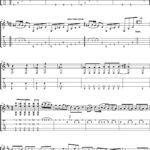The B minor (Bm) chord is a staple in countless songs across genres. Yet, for many beginner guitar players, it stands as a significant hurdle. Often presented as a barre chord, the Bm can feel incredibly daunting at first.
But don’t worry! This guide is designed to break down the Bm chord, making it accessible and achievable for guitarists of all levels. We’ll explore why the standard Bm barre chord is so challenging for beginners and, more importantly, introduce you to easier, beginner-friendly versions you can master quickly. Whether you’re just starting your guitar journey or looking to finally conquer the Bm, you’re in the right place.
Why is the Standard B Minor Chord So Difficult?
When you first search for “Guitar Tab B Minor” or look up the Bm chord in a chord dictionary, you’re likely to encounter the full barre chord version. This is often represented by a diagram like this:
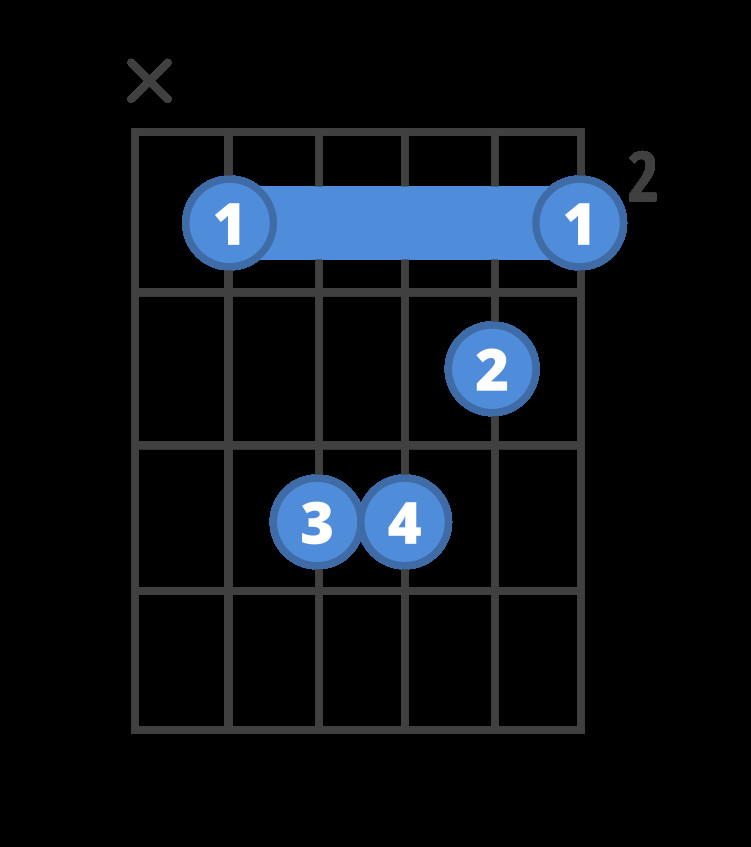 Chord diagram for the Bm guitar chord.
Chord diagram for the Bm guitar chord.
For those new to guitar, this diagram can be quite intimidating. The thick horizontal line across the second fret indicates a “barre,” a technique where one finger presses down multiple strings at once.
Here’s what the standard Bm barre chord looks like on the guitar:
As you can see, the index finger is laid flat across the fretboard, pressing down all six strings at the second fret. This barre technique is fundamental to many guitar chords, but it requires strength and dexterity that beginners often haven’t yet developed.
Barre chords are notoriously tricky for new players. Unlike open chords like D, G, or A, which utilize open strings and require fingers to press down individual strings, barre chords demand more finger strength and precise placement.
Barre Chords Explained: What Makes Them Different?
Most beginner guitar chords, such as D major, G major, and A major, are relatively straightforward. They typically involve only a few fingers, utilize open strings, and each finger is responsible for fretting a single string.
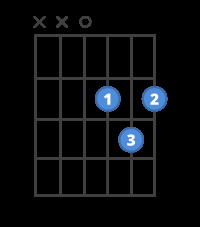 Chord diagram for the D guitar chord.
Chord diagram for the D guitar chord.
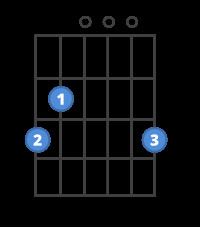 Chord diagram for the G guitar chord.
Chord diagram for the G guitar chord.
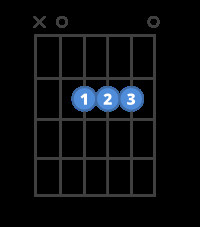 Chord diagram for the A guitar chord.
Chord diagram for the A guitar chord.
With these chords, each fingertip presses down on an individual string to produce a clear note. However, barre chords introduce a different challenge. You need to flatten your index finger across multiple strings, effectively creating a “bar” across the fretboard.
This barre must be held firmly while simultaneously positioning your other fingers to complete the chord shape. For beginners, coordinating this finger placement and applying enough pressure to create a clean sound across all strings can be overwhelming.
Easier Ways to Play the Bm Chord: Beginner-Friendly Versions
The good news is that you don’t have to wrestle with the full barre Bm chord right away. There are simpler versions that capture the essence of the B minor sound and are much easier to play as you develop your guitar skills. We’ll explore three versions, starting with the easiest.
The Easiest B Minor Chord for Beginners (3-Finger Version)
If the barre Bm seems out of reach right now, don’t be discouraged. There’s a fantastic three-finger version of the Bm chord that is just as easy to learn as other beginner chords you might already know.
Here’s the guitar tab for this simplified B minor:
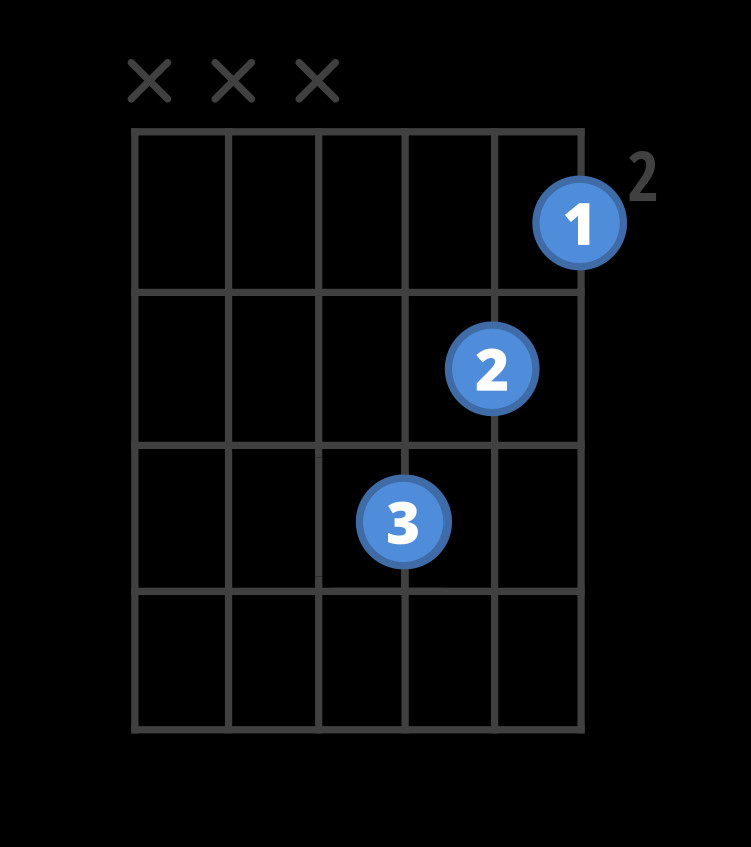 An easier, three-finger version of the B minor chord, with no barre required.
An easier, three-finger version of the B minor chord, with no barre required.
This version focuses on the essential notes of the B minor chord, using only the top three thinnest strings. Essentially, we’re just playing a portion of the full Bm chord, concentrating on the notes that define its minor quality.
Looking at the diagram side-by-side with the full barre version, you can see the relationship:
 An easier, three-finger version of the B minor chord, with no barre required.
An easier, three-finger version of the B minor chord, with no barre required.
This simplified Bm includes the root, third, and fifth of the B minor scale, which are the core components of the chord. It’s perfectly acceptable to play a partial chord like this, especially when you’re starting out. Just because a guitar has six strings doesn’t mean you always have to play all of them! Think of it like playing just a section of a piano keyboard – you still get a recognizable sound.
Watch a demonstration of this 3-finger Bm chord version. (Note: Replace “/” with actual video link if available)
Stepping Up: The 4-Finger B Minor Chord
Once you’re comfortable with the 3-finger Bm, you can expand it to a 4-finger version for a richer sound. This version introduces your pinky finger and adds another important note to the chord.
While using your pinky might feel a bit awkward initially, most players can learn this version within a short practice session. You’ll be adding a note on the 4th string (D string) at the fourth fret, which is where your middle finger was in the 3-finger version. We’ll essentially swap the positions of your middle and pinky fingers.
Here’s the guitar tab for the 4-finger B minor chord:
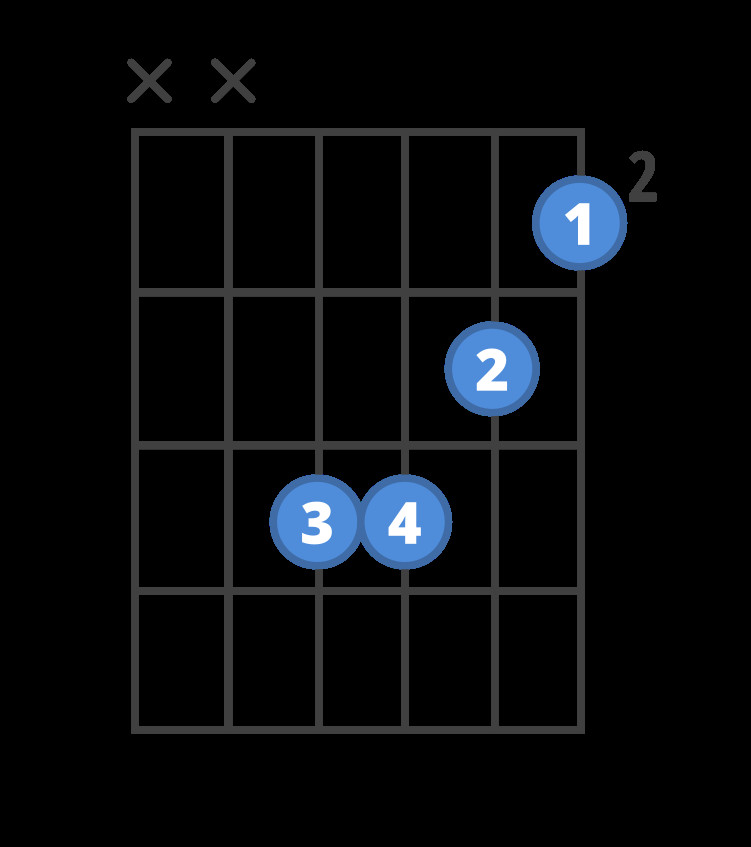 Chord diagram for the Bm guitar chord.
Chord diagram for the Bm guitar chord.
Tip: When you have two fingers on the same fret, the finger fretting the thicker string generally goes slightly behind the finger on the thinner string. This helps avoid buzzing and ensures clean notes.
Let’s compare this 4-finger version to the previous two:
 An easier, three-finger version of the B minor chord, with no barre required.
An easier, three-finger version of the B minor chord, with no barre required.
As you can see, we’re getting closer to the full barre chord shape – only one string away!
Here’s how it looks on the fretboard:
This 4-finger Bm chord is a great intermediate step. You can use this version in songs for a fuller sound than the 3-finger version. Practice this version, continue learning other chords, and gradually work towards the full barre chord when you feel ready. Remember to only strum the top four strings for this version to maintain the correct Bm chord sound.
Conquering the Full Barre B Minor Chord
When you feel your hand strength and finger dexterity improving, it’s time to tackle the full barre B minor chord.
Here’s the guitar tab for the standard Bm barre chord once more:
 Chord diagram for the Bm guitar chord.
Chord diagram for the Bm guitar chord.
Start by placing your index finger across all five thinnest strings at the second fret, just behind the fret wire. Flatten your finger slightly to ensure all strings are pressed down cleanly.
With the barre in place, position your remaining fingers in the same pattern as the easy 4-finger version we practiced earlier.
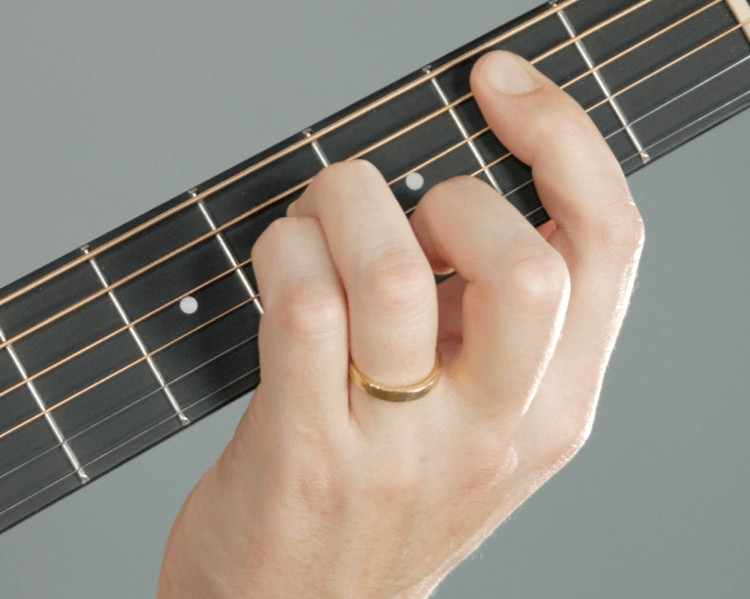 Image showing finger placement for the Bm barre chord.
Image showing finger placement for the Bm barre chord.
The key difference now is that your index finger barre replaces the need to fret individual strings at the second fret as in the easier versions. Strum all five thinnest strings (avoiding the thickest E string for a standard Bm).
Congratulations! You’ve just played a B minor barre chord. It might sound a bit buzzy or muted at first, and that’s perfectly normal. Barre chords require practice and finger strength to play cleanly. Don’t get discouraged! Consistent practice is the key to improvement.
Important: If you find barre chords frustrating, don’t let it stop your guitar journey. Continue using the easier 3-finger or 4-finger Bm versions in your playing until you build the necessary strength and technique for the full barre chord.
Further Lessons and Practice Resources
Barre chords can seem intimidating, but with the right approach, they become manageable. For in-depth guidance on mastering barre chords, we recommend checking out dedicated video lessons. These lessons can provide visual demonstrations and helpful tips for overcoming common barre chord challenges.
Practice Tips for Mastering the Bm Chord
To truly learn the Bm chord, you need to practice it consistently. Muscle memory is crucial for chord transitions and smooth playing. Here are some practice tools and techniques:
- Smart Flashcards: Use chord flashcards to drill chord changes between Bm and other common chords. This helps you memorize finger positions and improve transition speed.
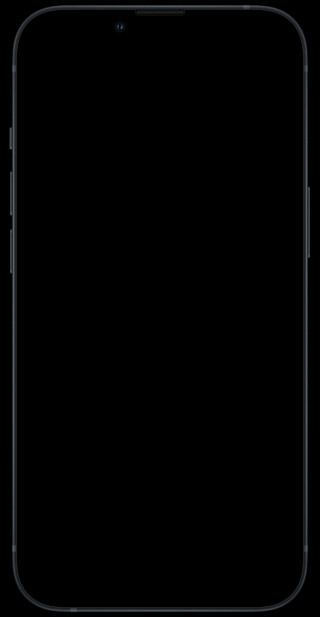 iPhone displaying chord flashcards.
iPhone displaying chord flashcards.
- Chord Practice Games: Make practice fun with interactive games designed to reinforce chord recognition and switching. Games can make repetitive practice more engaging and effective.
 iPhone displaying chord flashcards.
iPhone displaying chord flashcards.
- Practice Chord Pairings: Practice switching between Bm and related chords like Am to understand the movable nature of barre chord shapes.
Practice: Am and Bm
The Am (A minor) chord shares a similar shape to the Bm barre chord. Practicing transitions between Am and Bm can help you understand how barre chords work and build finger dexterity.
Am Guitar Tab:
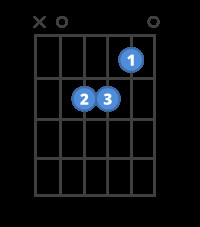 Chord diagram for the Am guitar chord.
Chord diagram for the Am guitar chord.
Bm Guitar Tab:
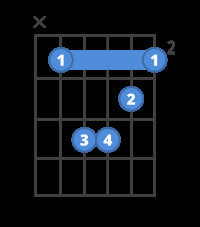 Chord diagram for the Bm guitar chord.
Chord diagram for the Bm guitar chord.
Practice Am and Bm Chord Changes »
Practice: Bm, D, G, and A Chords
Incorporate the Bm chord into common chord progressions with D major, G major, and A major. This helps you apply the Bm chord in musical contexts and improve your overall chord switching skills.
Bm Guitar Tab:
 Chord diagram for the Bm guitar chord.
Chord diagram for the Bm guitar chord.
D Major Guitar Tab:
 Chord diagram for the D guitar chord.
Chord diagram for the D guitar chord.
G Major Guitar Tab:
 Chord diagram for the G guitar chord.
Chord diagram for the G guitar chord.
A Major Guitar Tab:
 Chord diagram for the A guitar chord.
Chord diagram for the A guitar chord.
Practice Bm, D, G, and A Chord Progression »
Guitar Chord Games for Practice
Interactive games can make chord practice more enjoyable and effective. Try games like ChordPOP! or Blackjack to practice the Bm chord in a fun, engaging way. These games often use your device’s microphone to provide feedback as you play.
Play ChordPOP! Bm Chord Game »
Play Blackjack: Bm, A, and G Chord Game »
By understanding the different versions of the Bm chord and utilizing effective practice techniques, you’ll be playing the B minor chord confidently in no time. Start with the easiest version, gradually progress, and enjoy the journey of mastering this essential guitar chord!

